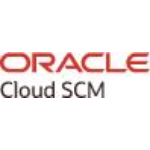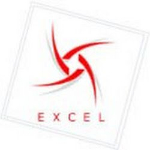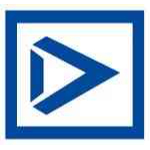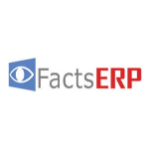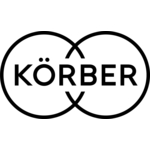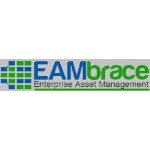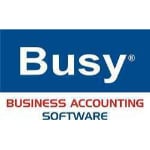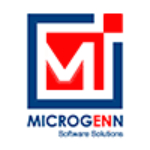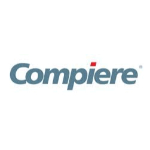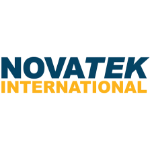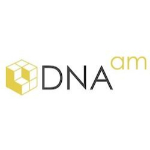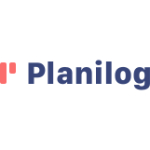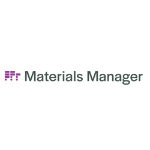TechnologyCounter provides genuine, unbiased real user reviews to help buyers make informed decisions. We may earn a referral fee when you purchase through our links, at no extra cost to you.
List of 15 Best Material Management Software
Showing 1 - 15 of 23 productsOracle Fusion Cloud SCM is a solution for streamlining supply chain management. With its advanced technology and user-friendly interface, this innovative software is designed to optimize business operations and drive growth. Say goodbye to outdated p...Read Oracle Fusion Cloud SCM Reviews
Medico SG is a and user-friendly software designed specifically for medical professionals. With its advanced features interface, Medico SG streamlines daily tasks and simplifies complex processes, allowing doctors and healthcare providers to focus on...Read Medico SG Reviews
ClarityERP, the complete business management solution designed to streamline every aspect of your company. From tracking finances and inventory, to managing customer relationships and operations, our user-friendly software gives you the tools you nee...Read ClarityERP Reviews
FactsERP is a one-of-a-kind software designed to streamline and simplify business management processes. With its innovative features and user-friendly interface, FactsERP offers a seamless experience to businesses of all sizes. By providing efficient...Read FactsERP Reviews
Koerber WMS is a warehouse management system designed to optimize and streamline warehouse operations. With an intuitive interface features, Koerber WMS offers unprecedented control and visibility over inventory, ensuring efficient and accurate fulfi...Read Koerber WMS Reviews
EAMbrace Inventory is a software designed to efficiently manage and track inventory for businesses of all sizes. With its user-friendly interface features, EAMbrace Inventory simplifies inventory management and streamlines processes, allowing busines...Read EAMbrace Inventory Reviews
Busy Accounting Software is a solution for all your financial management needs. With its user-friendly interface features, Busy streamlines your accounting processes and helps you stay on top of your finances. Say goodbye to tedious tasks and hello t...Read Busy Accounting Software Reviews
Microgenn is a software designed to streamline your business operations and boost productivity. Say goodbye to manual processes and hello to efficiency with Microgenn. Simplify your workflow and stay ahead of the game. Upgrade your business with Micr...Read Microgenn Reviews
Compiere is a trusted enterprise resource planning software that is designed to streamline business processes and increase efficiency. With its intuitive interface and robust features, Compiere is the ideal solution for managing day-to-day operations...Read Compiere Reviews
FastReactFabric is a powerful software that helps to minimize waste, optimize fabric utilization, and increase garment production using the same amount of fabric. This can be achieved by efficiently scheduling, planning, and tracking the use of fabr...Read FastReactFabric Reviews
Novatek International is a leading software company that specializes in delivering innovative solutions to the pharmaceutical, biotech, and medical device industries. With years of experience and a team of expert developers, Novatek prides itself on...Read Novatek International Reviews
DNAam is a solution for seamless DNA analysis! With its advanced technology and user-friendly interface, DNAam revolutionizes the way genetic data is processed and interpreted. From gene sequencing to data visualization, DNAam simplifies every step o...Read DNAam Reviews
Planilog is an innovative software designed to simplify project management and maximize productivity. With its user-friendly interface features, Planilog streamlines tasks, tracks progress, and enhances collaboration. Say goodbye to complex project p...Read Planilog Reviews
MODS Materials Manager is a inventory management solution designed to streamline your business operations and increase efficiency. With its user-friendly interface and robust features, MODS Materials Manager simplifies the management of materials, sa...Read MODS Materials Manager Reviews
Realx ERP is a cloud-based program, making it the most cost-effective, hassle-free, and simple-to-use ERP solution available. It has the greatest ability of customization, and has the shortest implementation time and also provide superior customer su...Read Realx ERP Reviews
- What Is Material Management Software?
- Top Reasons Why Businesses Need Material Management Software?
- What Are the Top Key Features of Material Management Software?
- What Are the Top Benefits of Material Management Software?
- What Are the Steps to Choose the Right Material Management Software?
- What Are the Types of Material Management Software for Different Industries?
- What Are the Technology Trends for Best Material Management Software?
- What Are the Deployment Options for Material Management Software?
What Is Material Management Software?
Material management software refers to a computer-based system that is specifically developed to assist firms in effectively overseeing the processes of acquiring, storing, and utilizing materials.
This material management system software facilitates the optimization of the complete workflow encompassing purchasing and inventory management. The system enhances the level of transparency for staff members regarding the availability of materials in inventory, the timing for restocking, and facilitates prompt responses.
The program facilitates the management of vendors, lead times for materials, and order information. Additionally, this tool has the capability to provide comprehensive reports pertaining to the inventory of commodities, including stock levels, stock movements, order fulfillment, supplier performance, and other relevant metrics.
The best material management software enables firms to exert greater control over their raw materials, including their procurement and utilization, thereby facilitating operational optimization and long-term cost savings.
Top Reasons Why Businesses Need Material Management Software?
1. In order to optimize operational efficiency and mitigate financial losses stemming from excessive inventory and material waste.
2. In order to enhance the efficiency of ordering procedures, it is imperative to offer more transparency regarding stock levels and inventory requirements.
3. In order to achieve efficient allocation of resources and achieve cost reductions, it is important to be able to readily identify areas that can be improved.
4. In order to promptly ascertain requirements and available resources, facilitating expeditious and timely acquisition of materials.
5. In order to mitigate the risk of erroneous order placement and prevent potential fraudulent activities, it is imperative to incorporate purchasing control systems.
6. In order to mitigate the occurrence of lost or delayed shipments, it is imperative to implement automated tracking systems and streamline associated operations.
7. In order to enhance asset management and inventory control, it is proposed to implement an automated system for stock movement, with the aim of mitigating the occurrence of stock shortages.
8. In order to efficiently oversee and coordinate the operations of many warehouses and inventory sites, it is imperative to employ a centralized system.
9. In order to mitigate the occurrence of manual data entry and human mistake, it is proposed to implement integrated financials across numerous platforms.
10. In order to enhance the efficiency of warehouse operations, it is imperative to implement integrated supply chain processes.
11. In order to mitigate the amount of material waste, it is imperative to have immediate access to information regarding inventory levels and utilization.
12. The objective is to enhance customer service and reduce process overruns through proactive anticipation of materials requirements prior to order placement.
13. The objective is to establish a system that enables the monitoring and documentation of the movement of goods through automated means, while also providing the capability to generate reports based on this tracked information.
14. In order to ensure the implementation of safety and quality protocols, it is imperative to incorporate integrated safety features and alarms to address any potential material shortages.
15. The objective is to decrease overall operational expenses through the implementation of automation in routine operations and processes related to material management.
What Are the Top Key Features of Material Management Software?
The top key features of a material management software are:
1. Inventory Tracking: This functionality enables users to monitor stock levels, access product orders, detect inventory inconsistencies, and oversee the complete lifetime of goods.
2. Automated Reordering: The implementation of automated reordering systems enables users to proactively strategize and effectively manage inventory levels for optimal performance. Additionally, it serves as a preventive strategy to mitigate the issue of excessive inventory, hence minimizing wastage and maintaining cost efficiency.
3. Real-time Updates: The utilization of material management software facilitates the provision of timely and up-to-date information pertaining to inventory levels, order processing, and delivery status. This practice ensures that all relevant parties are kept well-informed and enhances the overall efficiency of the workflow.
4. Data Analysis: Automated data analysis facilitates organizations in gaining a more comprehensive comprehension of their prevailing stock and sales patterns. This facilitates the prediction of future trends and enhances stock management for the purpose of maximizing profitability.
5. Automated Supplier Integration: This functionality facilitates the efficient management of supplier-related duties for enterprises. This practice guarantees alignment between suppliers and customers, hence facilitating the efficient coordination of deliveries.
6. Barcoding Support: The utilization of barcoding and RFID scanning facilitates efficient identification and tracking of inventories, so enabling organizations to allocate people resources to alternative duties.
7. Quality Control: The implementation of quality control measures is crucial for the efficient functioning of any warehouse. The utilization of material management system software facilitates the identification of inconsistencies and the maintenance of elevated quality standards.
8. Customisable Reporting: The utilization of online material management system facilitates the generation of tailored reports, enabling organizations to effectively monitor and analyze data. This practice can assist individuals in identifying areas that require development and enhancing their workflow efficiency.
What Are the Top Benefits of Material Management Software?
1. Increased Productivity: Material management software is a valuable tool that facilitates the optimization of processes, the automation of jobs, and the coordination of workflows. Its primary objective is to minimize the amount of time dedicated to manual chores and paperwork. Consequently, this phenomenon leads to an enhancement in productivity, enabling enterprises to generate a greater output while utilizing a reduced amount of resources.
2. Improved Accuracy: The reduction of manual labor leads to a significant decrease in errors that may arise from manual data entry and procedures. This enables enterprises to attain enhanced levels of precision in their operational processes as well as in their reporting activities.
3. Improved Inventory Control: Top material management software enables firms to effectively monitor inventory levels and maintain comprehensive records of inventory movements. This approach has the potential to decrease waste and optimize financial gains.
4. Decreased Cost: The best material management software has the potential to substantially reduce operating expenses by removing labor-intensive manual operations. The reduction in costs leads to an increase in earnings.
5. Enhanced Decision Making: The utilization of an online material management system can offer vital insights and analytics regarding a business's performance, facilitating well-informed decision-making processes that have the potential to greatly enhance operational efficiency.
6. Improved Flexibility: The best material management software facilitates the seamless modification and adaptation of processes, enabling firms to effectively respond to dynamic market demands and evolving client requirements.
7. Improved Customer Service: A proficient material management system software for material management has the capability to furnish customer service employees with up-to-date data and valuable insights, enabling them to promptly deliver precise client support.
What Are the Steps to Choose the Right Material Management Software?
1. Start by identifying your needs: Prior to selecting material management software, it is imperative to thoroughly ascertain and prioritize one's requirements. Consider the various activities that you anticipate the program to undertake for your firm, encompassing functionalities such as inventory control, purchasing management, and financial tracking.
2. Research and analyze your options: After the identification of one's needs, it is advisable to conduct a thorough study and make comparisons among the various software solutions that are accessible. To streamline the selection process, it is advisable to take into account many criteria, including but not limited to cost, user-friendliness, integration capabilities with other systems, and customer feedback. These considerations will aid in narrowing down the available options.
3. Prepare your systems and data: Prior to selecting best material management software, it is imperative to ensure that the current data and systems are appropriately organized and compatible with the prospective software solution. The establishment of a thorough plan and schedule for implementation is of paramount importance in the process of software selection.
4. Run a trial: After the identification of needs and completion of research, the subsequent step involves the testing of the program. Numerous corporations provide complimentary or discounted trial periods for their merchandise, enabling individuals to have a more comprehensive understanding of its functionalities and ascertain its compatibility with their pre-existing systems.
5. Make a decision: Once the material management system software has been thoroughly tested, it is now appropriate to proceed with making a decision. Select the software solution that optimally aligns with your requirements, exhibits superior user-friendliness and cost-efficiency, and effortlessly interacts with your pre-existing systems.
What Are the Types of Material Management Software for Different Industries?
Material management software is a software application designed to facilitate the efficient management of work orders, inventories, and production activities within enterprises. Various sectors possess distinct requirements for their online material management system, which might fluctuate based on factors such as their scale, intricacy, and the nature of the products or services they provide.
1. Manufacturing Software: Manufacturing software is a highly suitable option for enterprises engaged in various forms of fabrication, assembly, computer numerical control (CNC) machining, or other production-centric operations. These solutions facilitate the optimization of operations by streamlining the production process and enabling the tracking of inventory levels and order requirements.
2. Supply Chain Software: This particular program has been specifically developed to monitor and enhance each stage of the supply chain procedure. Supply chain software is utilized for the purpose of effectively managing logistics, transportation, and inventory planning, while also offering real-time data analysis capabilities to facilitate informed decision-making processes.
3. Warehouse Management Software: This particular program has been specifically developed for the purpose of overseeing and controlling warehouse operations. This encompasses the processes of inventory tracking and management, as well as space optimization, shipping, and receiving.
4. Construction Software: Construction software is specifically developed with the aim of enhancing the operational effectiveness of construction, engineering, and other procedures. This particular program facilitates the management of project planning and control, budgeting, scheduling, and inventory forecasting.
5. ERP & MRP Software: Enterprise resource planning (ERP) and manufacturing resource planning (MRP) software systems are widely employed across diverse industries with the purpose of automating and optimizing operational processes. This encompasses the management of several aspects such as financial resources, material resources, production processes, and sales operations.
By comprehending the specific requirements of several business sectors, it becomes feasible to ascertain the most optimal material management software for each given industry.
What Are the Technology Trends for Best Material Management Software?
The prevailing technological developments in the realm of material management software encompass the subsequent trends:
1. Cloud-based: The utilization of cloud-based software and solutions for material management has witnessed a notable rise, affording enterprises the capability to remotely and securely access data.
2. Automation: This study focuses on the utilization of artificial intelligence and robotic process automation in software systems for material management. The objective is to enhance the efficiency and effectiveness of inventory management operations by expediting and optimizing the processes involved.
3. Blockchain technology: Blockchain technology offers a reliable and decentralized system for recording and verifying the movement and ownership of materials, hence enhancing the precision of data.
4. Open APIs: The seamless integration of online material management system with various systems and sources of supply chain data facilitates the real-time connection of data across numerous systems, hence enhancing organizational visibility.
5. Mobility: There are various mobile applications and solutions available that facilitate inventory tracking and enable users to access and monitor data remotely and at any given time.
What Are the Deployment Options for Material Management Software?
The available deployment methods for material management software are contingent upon the specific program utilized and the requirements of the organization. In the realm of software deployment, two predominant alternatives exist, namely software as a service (SaaS) and on-premises deployment.
Software as a Service (SaaS) refers to a cloud-based solution in which the hosting and management of the software are undertaken by the vendor, while users use the system remotely. This particular deployment method is frequently used due to its capacity to scale and adapt easily, as well as its comparatively reduced ownership expenses.
The concept of on-premises deployment refers to the installation and maintenance of software on a company's network, with access being facilitated through localized connections such as local area networks (LANs). This approach is commonly favored by enterprises with more stringent security considerations and access control requirements.
